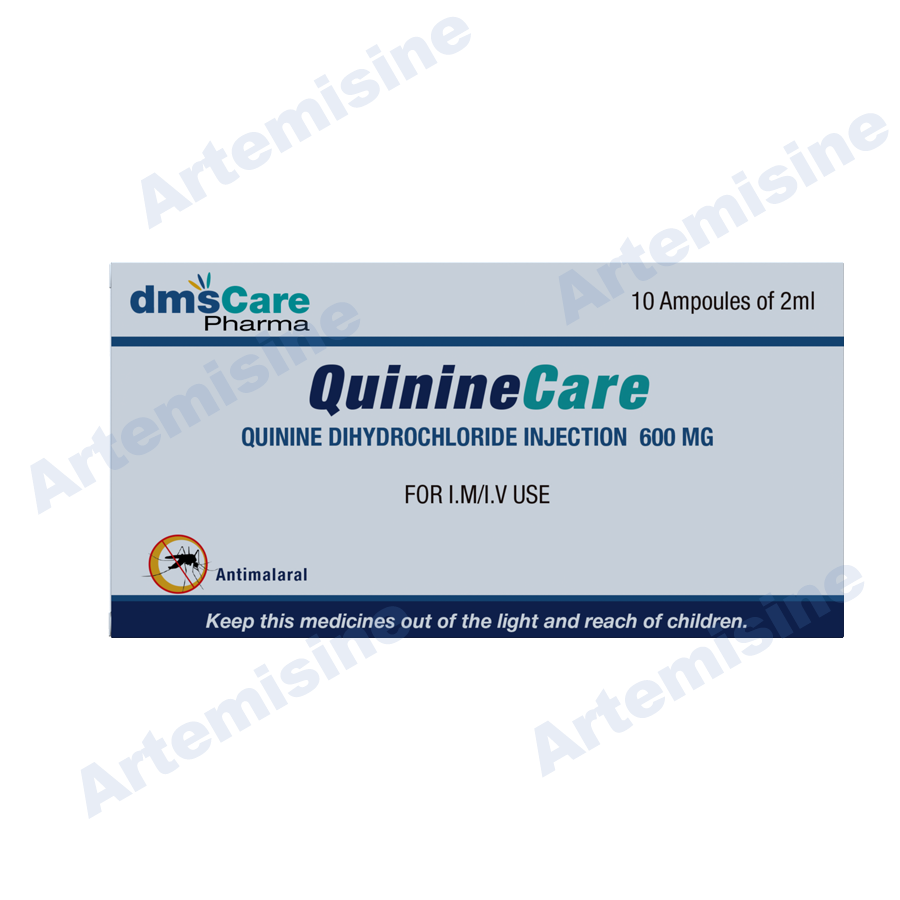Product Description
Products Name:
Quinine dihydrochloride injection
Contains:
600mg ampoule
Package:
10 ampoules/box
Therapeutic action:
Indications
- Alternative to injectable artesunate, when it is not available, in the treatment of severe malaria
Forms and strengths, route of administration
- 600 mg of quinine dihydrochloride in 2 ml ampoule (300 mg/ml), to be diluted in 5% glucose, for slow infusion.
NEVER ADMINISTER BY IV INJECTION.
Dosage
The dosage is expressed in terms of salt:
- Child and adult:
- loading dose: 20 mg/kg administered over 4 hours, then keep the vein open with an infusion of 5% glucose over 4 hours
- maintenance dose: 8 hours after the start of the loading dose, 10 mg/kg every 8 hours (alternate quinine over 4 hours and 5% glucose over 4 hours)
For adults, administer each dose of quinine in 250 ml. For children under 20 kg, administer each dose of quinine in a volume of 10 ml/kg.
Do not administer a loading dose to patients who have received oral quinine or mefloquine within the previous 24 hours: start with maintenance dose.
Duration
- Treat parenterally for at least 24 hours, then, if the patient can tolerate the oral route, change to a complete 3-day course of an artemisinin-based combination (or if not available oral quinine to complete 7 days of quinine treatment).
If not, continue parenteral treatment until the patient can change to oral route (without exceeding 7 days of parenteral treatment).
Contra-indications, adverse effects, precautions
- May cause: hypoglycaemia; auditory and visual disturbances, cardiac disorders (especially in the event of overdose), hypersensitivity reactions, cardiac depression if injected undiluted by IV route.
- In patients with acute renal failure, reduce the dose by one-third if the parenteral treatment lasts more than 48 hours.
- Monitor blood glucose (reagent strip test).
- Do not administer simultaneously with mefloquine (risk of seizures, cardiac toxicity). Administer mefloquine 12 hours after the last dose of quinine.
- Pregnancy: no contra-indication. The risk of quinine-related hypoglycaemia is very high in pregnant women.
- Breast-feeding: no contra-indication
Remarks
- 10 mg quinine dihydrochloride = 8 mg quinine base.
- Administration by IM deep injection (into the anterior thigh only) is possible when infusion cannot be performed (e.g. before transferring a patient). However this may cause numerous complications. Doses are the same as for the IV route. Quinine should be diluted (1/2 or 1/5). For the loading dose, administer half the dose into each thigh.
Storage
Below 25 °C
